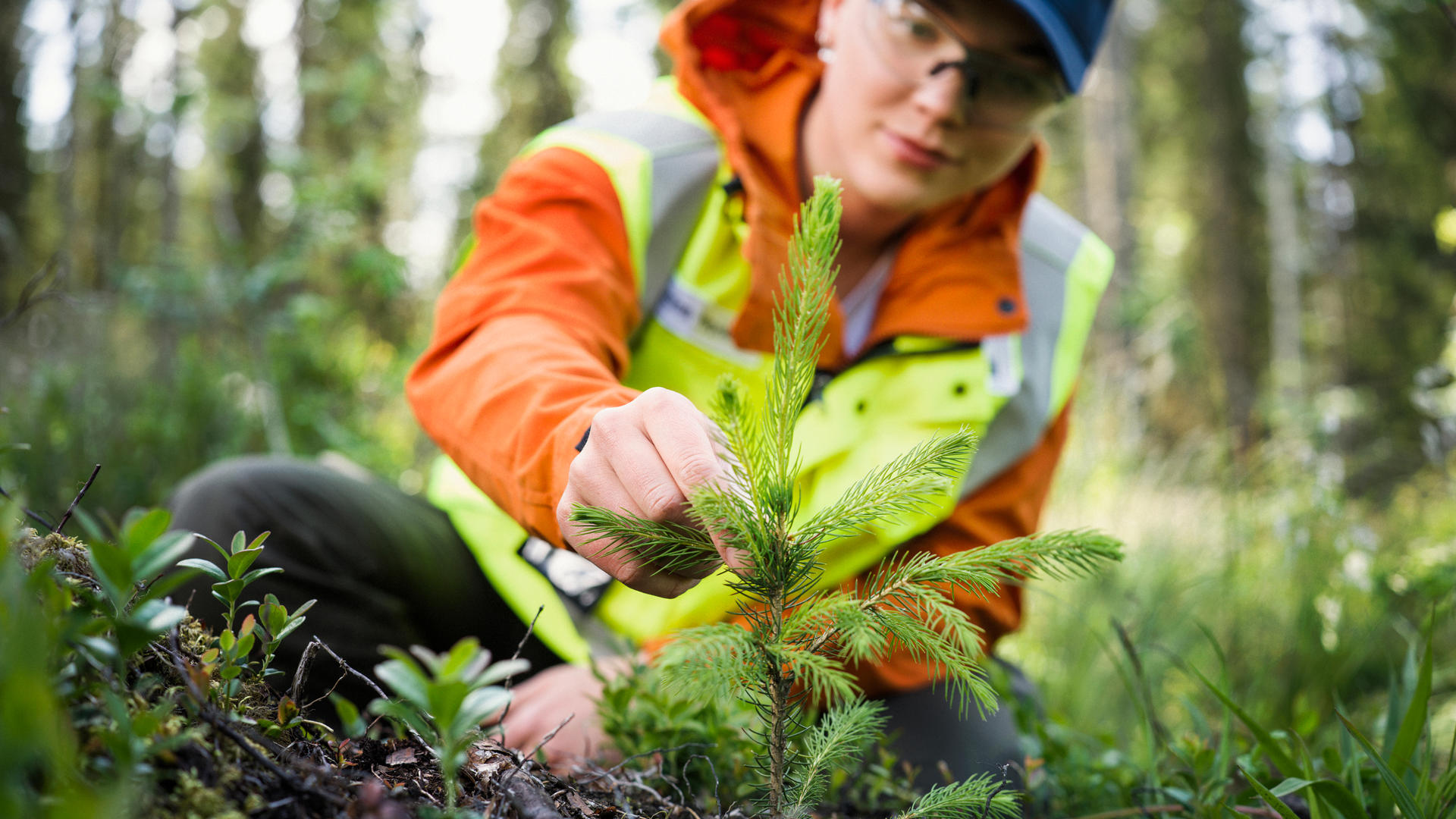Request an offer on forest management from your local forest specialist. The forest specialist knows which forest management work needs to be carried out in your forest. Forest management includes for example the establishment of a new forest and young stand management. You can also request an offer in the Metsäverkko service. These services are only available in Finland.

Young stand management is a profitable investment in sustainable forest management
Request an offer on forest management
Four reasons for young stand management
-

Increased forest yield
 Increased forest yield
Increased forest yieldStudies indicate that young stand management is an extremely profitable investment. According to calculations, if you neglect early cleaning and pre-commercial thinning in a spruce stand in southern Finland, the forest’s financial yield during the forest cycle is around 30 per cent lower than if the stand is managed in a timely manner. The difference is even greater for pine stands. A dense growth environment decelerates the growth of pine even more than that of spruce, because the tops shrink excessively.
The profitability of young stand management arises primarily from the fact that more roundwood of a higher quality is obtained from the forest during the forest cycle. After young stand management, significantly more roundwood is obtained during the first thinning compared with an unmanaged forest. Moreover, the forest cycle is shorter, and valuable log wood accounts for a larger share of the overall wood yield during the cycle. Since log wood earns forest owners nearly triple the income from pulpwood, growth in the share of log wood notably improves the profitability of forestry.
-

Timeliness saves money
 Timeliness saves money
Timeliness saves moneyDo not delay decisions about young stand management: time really means money with seedlings. Every delayed year in early cleaning or pre-commercial thinning increases the costs of work by about ten per cent.
The forest cycle also lengthens, as it takes longer for trees to grow sturdy, which means the forest owner must wait longer for income compared to the alternative of timely young stand management.
-

Benefits to the climate
 Benefits to the climate
Benefits to the climateWhen forest growth targets high-quality future logs, young stand management also indirectly benefits the climate. Properly implemented young stand management helps seedlings quickly develop into a vibrant and resilient forest that sequesters more and more carbon as it grows. The more log wood is obtained from the trees harvested during the forest cycle, the more carbon is sequestered in high-quality and long-lived wood products.
Rapid forest regeneration also has a climate impact: the faster a new forest is established, the faster the trees begin to resequester carbon. A well-managed seedling stand in Southern Finland becomes a carbon sink at the tender age of 15. Read more about carbon sinks here.
-

Forestry subsidies promotes young stand management
 Forestry subsidies promotes young stand management
Forestry subsidies promotes young stand managementIn Finland, private forest owners can apply for forestry subsidies (metka) from the Finnish Forest Centre. You can apply for metka subsidies for young stand management and young forest management, corrective fertilization, forest road construction and improvement, peatland forest management, management of forest nature, environmental support and support for controlled burning.
When you order forest management work from Metsä Group, your personal forest specialist will apply for the metka subsidy directly on your behalf. Read more about forestry subsidies here.
The costs for young stand management are deductible in forestry taxation.
The goal of young stand management: a diverse and sustainable forest
In young stand management, diversity is a constant consideration from early cleaning onward, as the choices made have lasting impacts on the forest. For example, if all the broadleaved trees are removed during young stand management, it will be difficult to incorporate them into the forest later.
The aim in young stand management is to grow a mixed forest, which improves biodiversity and sustainability in a changing climate. During early cleaning, silver birch that are grown from seed and are no taller than the surrounding conifers are preserved. Other broadleaved trees are also left in large open spots. The number of broadleaved tree species is the same before and after young stand management.
The final choices concerning the trees to be grown during the forest cycle are made during pre-commercial thinning. If the goal is to grow a coniferous forest, a mix of broadleaved trees accounting for approximately 10 per cent is left in place. This increases biodiversity and adds variety to the landscape.
If undergrowth is not a problem for tree growth, it does not need to be completely removed. This also avoids unnecessary work. Young stand management also involves the establishment of new protective thickets or the preservation of old ones, which are excluded from forestry at all stages of forest management. Protective thickets provide protection and nutrition for birds and mammals.
